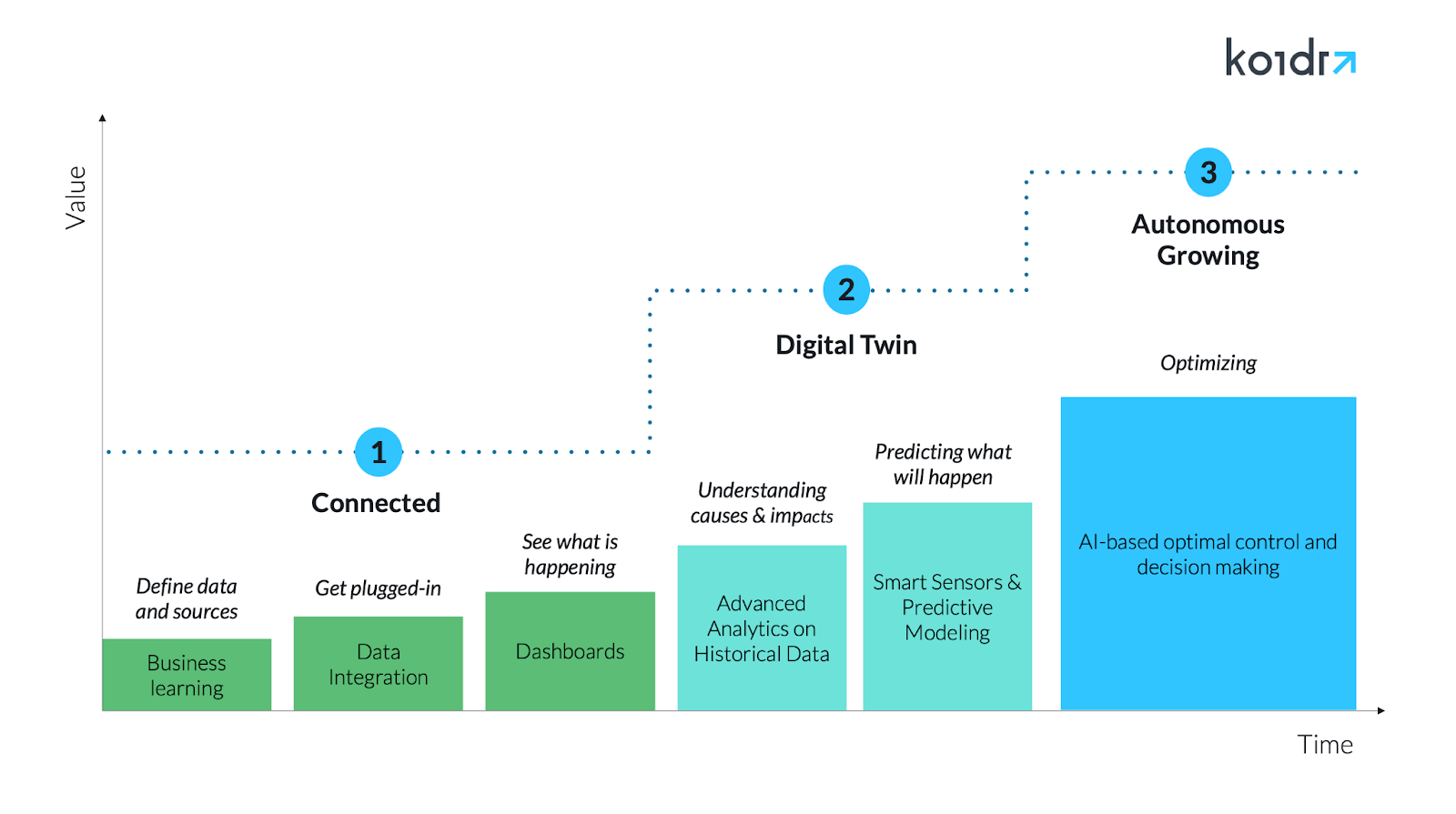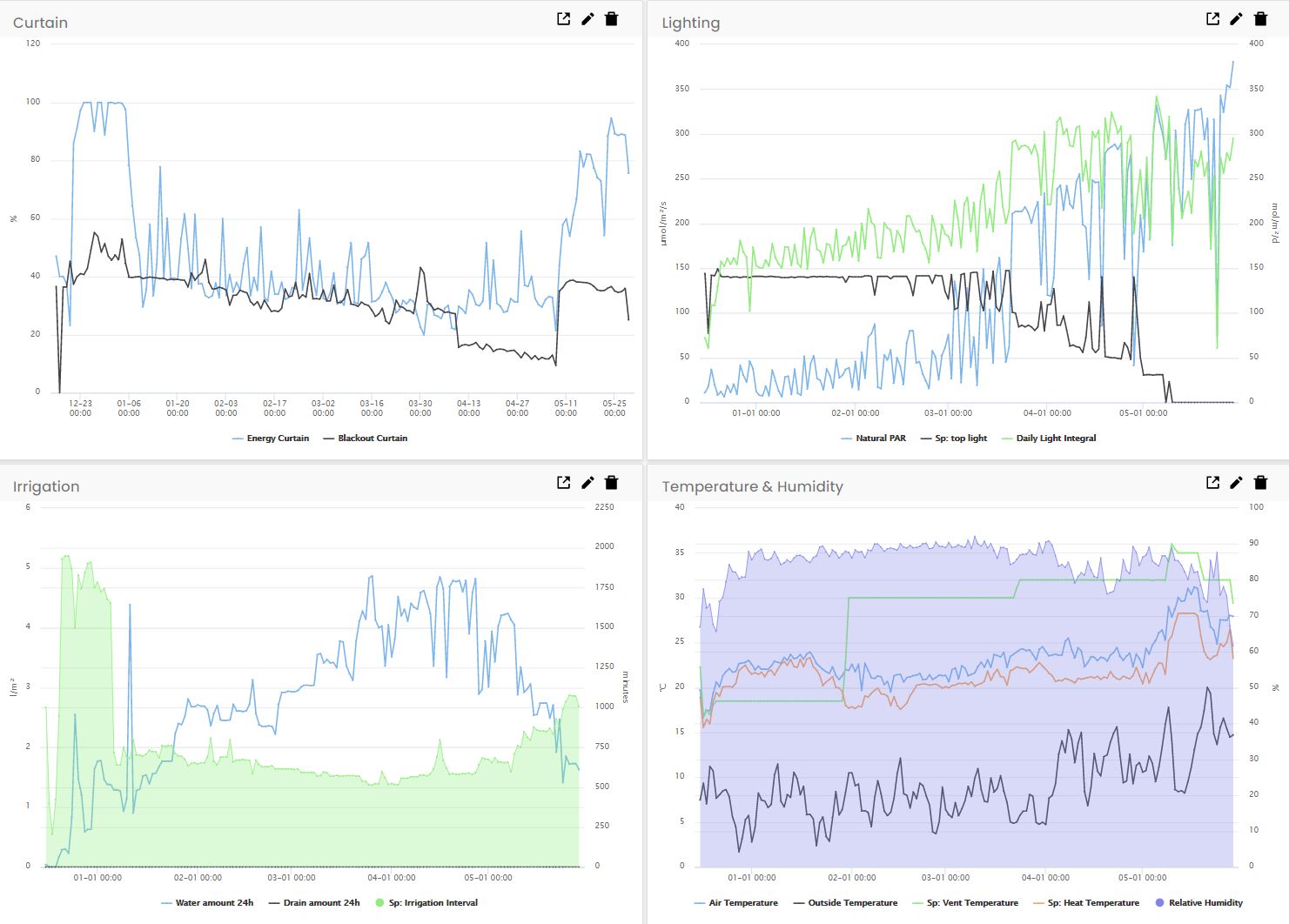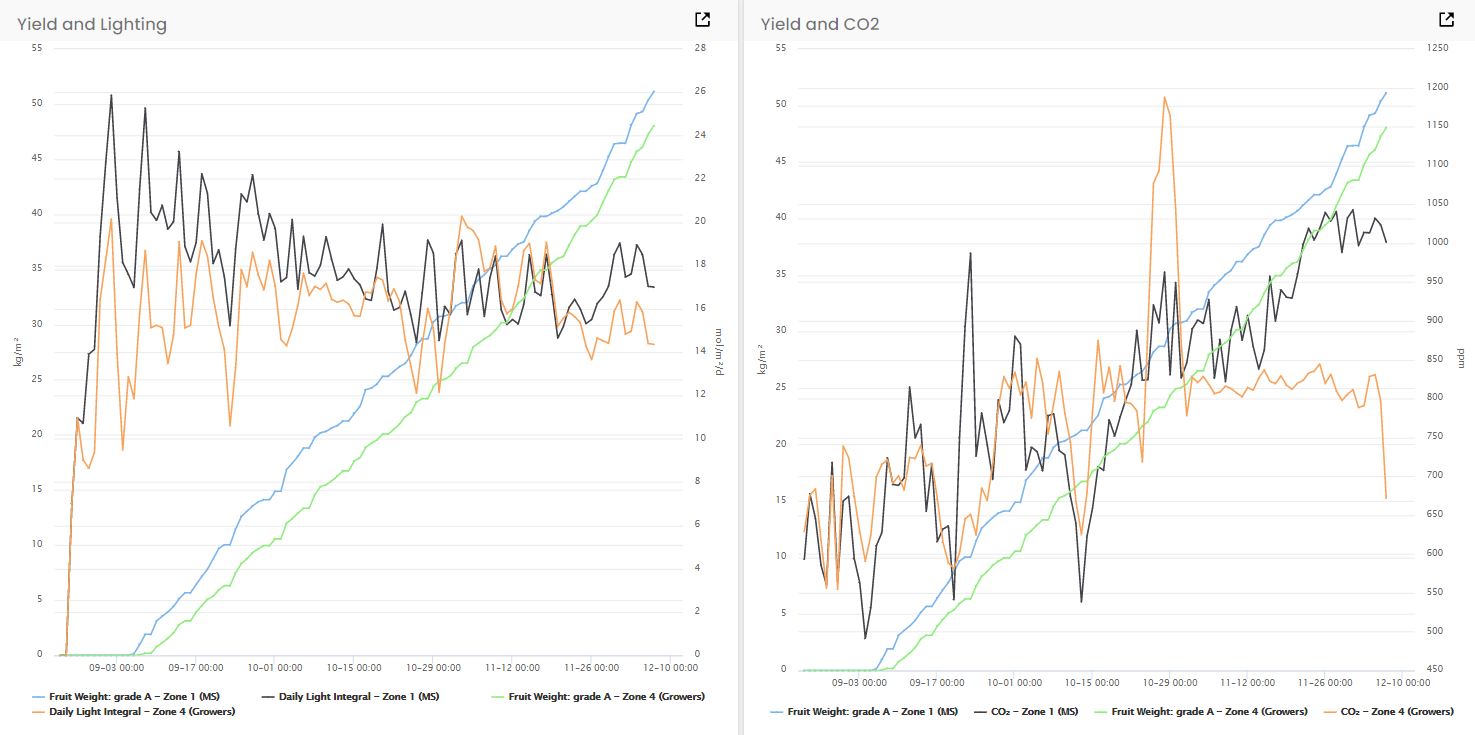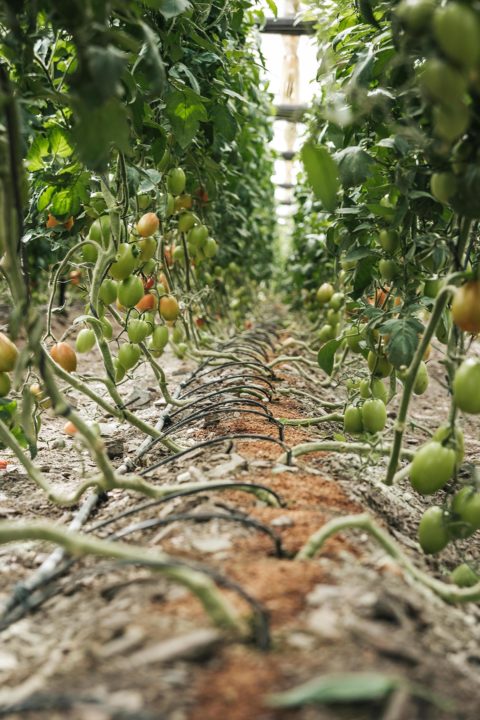Digital Horticulture: An Important Step Toward Autonomous Growing
As written in my previous article on the power of Artificial Intelligence (AI) in greenhouses, a well-architected AI system can help growers achieve higher yields while optimizing resources efficiency, hence enabling indoor farms to be more sustainable, viable, and profitable. By generating insightful analytics across innate greenhouse operations, AI can support growers in making informed decisions based on data and empower them to be future-minded about efficiency and sustainability. Therefore, the next revolution of agricultural practices is dominated by the combination of artificial intelligence and human wisdom.
It is said that “There’s No AI (Artificial Intelligence) without IA (Information Architecture)”. In greenhouse growing, we coin a more specific term for IA: Digital Horticulture. Data is the fuel for AI. The more sophisticated the AI (rocket ship), the greater the need for large amounts of high-quality, clean data (jet fuel). But amidst the rush to jump on the AI bandwagon, companies (and even data scientists and machine learning specialists themselves) overlook the critical need to build a solid foundation for how data is captured, consumed, and shared within the organization.
Here, we lay the foundational steps for how to digitally transform your growing business with digital horticulture and move towards autonomous growing.
The Essential Components of a Digital Horticulture Platform
An economically viable digital horticulture platform must consist of the following layers.
First is the Data Gateway. Date gateway is a middleware that is installed at the site. It reads data from multiple data sources on the ground and sends them to the cloud for persistent storage and anywhere-access. A well-architected data gateway must be able to consistently read data from both the legacy process control systems (e.g. Priva, Hoogendoorn, Argus, etc.) and from any new sensors that the growers would like to put in (without having to go through that legacy control system), at low cost and low friction. There are data gateways on the market, but currently none meets these criteria yet. Specifically:
- Standard data-loggers can only help read data from new sensors only. Additionally, the installation is non-trivial and typically requires a specialist. For perspective, a data-logging setup service can easily cost up to $15,000 to $20,000, although the data-logger hardware itself sells in the range of $1,000 to $2,000. More importantly, once installed, the farm would end up with two siloed systems: the new data-logger and the old process control system.
- On the other hand, very few companies today can readily help extract data from the existing climate control system. For most growers, their data is trapped in a box. The jargon usually used in tech is “vendor lock-in.” Vendor and data lock-in is one of the main barriers that has prevented the greenhouse industry from catching up with the digital transformation trends.
For most growers who want to adopt AI, they are stuck at this very basic layer.
The second layer is cloud-based Data Management. This layer stores and organizes the data, potentially in big volumes, on the cloud. A properly implemented data management system must allow the data to grow elastically, without the users having to worry about deleting old data. It must also enable users or third-party apps functioning on behalf of users to access the data, either real time or historical, freely and efficiently.
Last but not least is the Business Intelligence apps that provide the users an easy-to-use interface for consuming, understanding, and making sense of their data. In this layer, data is transformed into visual, meaningful, and insightful information that the growers can leverage to optimize their decision making for crop management, as shown in Figure 1 below.

Business Intelligence for Growers
An example of such a digital horticulture platform, Koidra’s IoT Suite has all those components. It is a hardware-and-software system that collects and utilizes data from multiple sources (sensors, legacy control systems, auxiliary databases, etc.). The IoT Suite includes a low-friction gateway that enables growers to extract data from their existing process computer, allowing interoperability. The system stores data on a cloud storage and uses the data to generate an operational, intuitive, and insightful dashboard for the growers. The dashboard includes historical as well as real-time data and can be accessed from anywhere on any device with internet access. This, in turn, provides the farmers with actionable information that drives informed decisions.
Bridging Digital Horticulture and Autonomous Growing
In order to help indoor farms embrace digital horticulture and then move forward with autonomous growing, Koidra has designed a phased deployment roadmap. This roadmap utilizes three essential components of digital horticulture above, including data gateway, cloud-based data management, and significant business intelligence.

Koidra’s technology deployment roadmap for an autonomous growing solution
The first phase is Connectedness, where all the sensor and operational data is digitized. Data from multiple sources are unified and stored in the cloud via a data gateway. These data are used to generate an operational dashboards which growers can use to monitor the crop and to leverage it for their decision making. Figures 3 and 4 provide some data visualization examples. These customizable dashboards provide critical metrics for the growers.

Sample climate dashboard on Koidra’s Krop Manager app
The second phase involves the development of a digital twin model, powered by scientific computing and machine learning. A digital twin is a virtual replica of the growing environment and allows the growers to see what happens next to their crop when they try different strategies. Digital twins take real-world data from sensors about a system or a product as input and simulate how the system will be affected by those inputs. The simulation model predicts greenhouse microclimate dynamics and crop growth and development given the current state and historical data.
Ultimately, “Autonomous Growing” allows all the complex climate and crop control decisions to be made by the computer. The autonomous growing model imitates how a data-driven grower would make decisions using the same inputs and simulation outputs above. The model unifies the power of AI and the grower’s knowledge to determine the optimal control decision.

Koidra’s Krop Manager app allows growers to compare the performance across zones or across seasons.
The strength of this implementation roadmap is to guarantee that each phase is a self-contained success, which must yield high ROI in itself while waiting for the next one to be assessed and installed. For example, growers at the first phase have already gathered enough critical data to aid their human decision making process, which is the gist of Digital Horticulture. The second phase could involve machine learning, harvesting historical data to make predictions for the future. When we evolve to the next and final, integrated phase, full-fledged AI would empower the growers with its various automated decisions.
Driving Yields and Sustainability
In the age of cloud computing, internet of things, and AI, digital horticulture is essential for farming businesses to stay data-driven, efficient, and resilient to meet the increasing food demands. This is especially relevant to the existing global food crisis that humanity is facing. Per the UN, 70% more food is needed by 2050 while resources (e.g., land, water, energy) are diminishing. Agriculture generally, and indoor farming specifically, is in need of a transformation by embracing the technology to move from intuition to a system of precision agriculture, from manual processes to automated solutions.
For more consultation on how to implement a bullet-proof Digital Horticulture platform with extendability for Autonomous Growing, contact us at [email protected]. Koidra CEO, Kenneth Tran, will also give a talk about AI and its application in Controlled-Environment Agriculture at Cultivate Live Stage from 4:30 PM to 5:00 PM on July 12, 2021.









